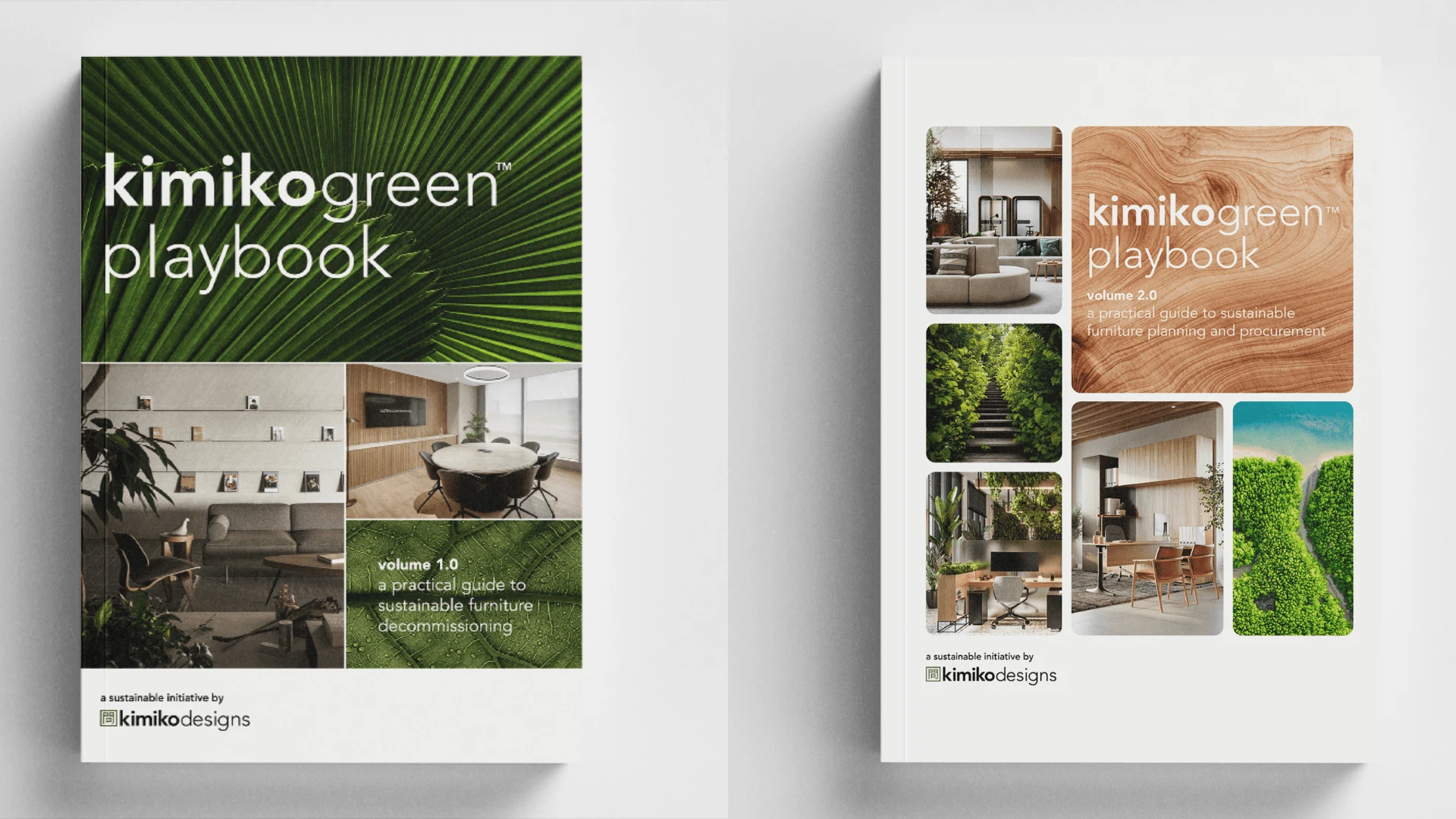
Changemakers: Kimiko Green
19-Feb-2025
Dianne Murata and the Kimiko Green community are showing that sustainability in commercial furniture isn’t just possible but necessary. “We help facility owners make informed, educated decisions – including understanding the business case for circularity in commercial furniture,” she notes. “It’s also right for the planet!”
Interview #11 in the Changemaker series
In this conversation, we speak with Dianne Murata about the evolution of Kimiko Green’s launch of monthly roundtables and practical ‘playbooks’ on decommissioning surplus furniture. And how a commitment to the mantra of Just One Thing can drive measurable change.
This is the 11th in our Changemakers series – interviews with leaders in sustainable, circular and regenerative approaches in the furniture industry. Our aim is to uncover the nuts and bolts of how each leader is driving change, the potential it holds, and why it matters to the industry.
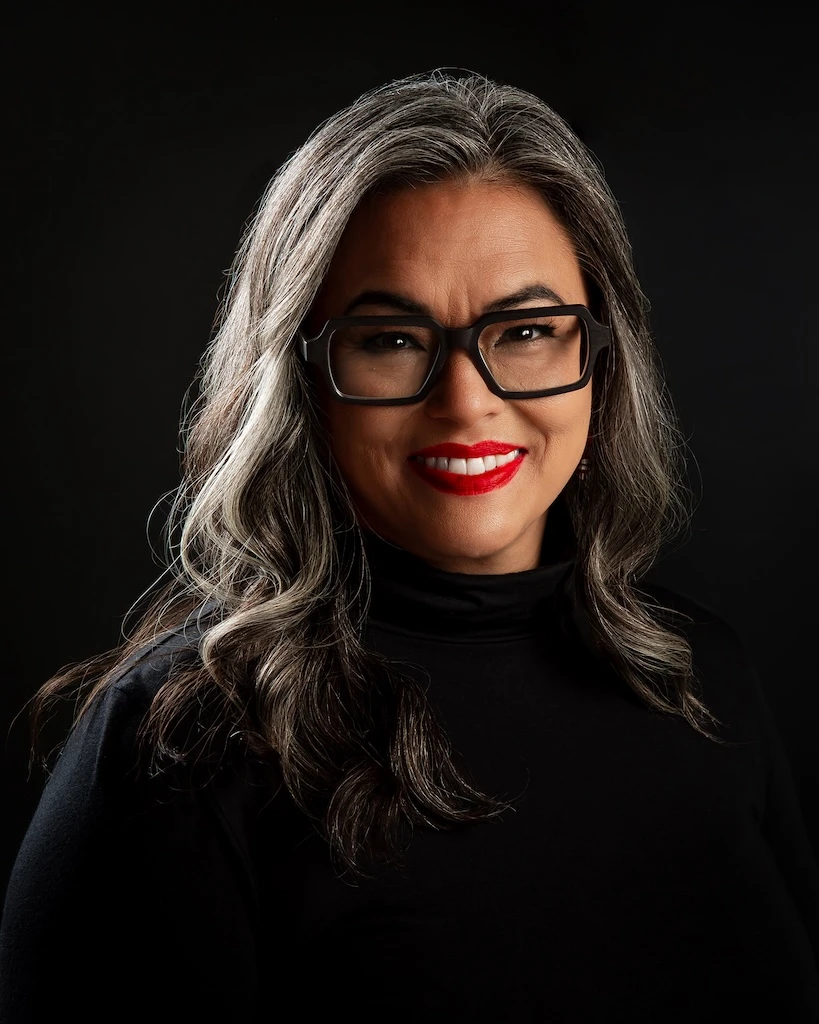
Dianne Murata
mebl: Hi Dianne! Tell us a bit about yourself, what led you to the furniture industry and to launch Kimiko Designs?
Dianne Murata: I grew up in Winnipeg, Canada, in a neighborhood next to the University of Manitoba. I think being unique has always been a part of my DNA. I'm half Japanese, which, growing up in Canada, wasn't super typical. All my friends were going into arts or sciences or business – that just seemed too common!
The University of Manitoba has a really strong interior design program – with its element of creativity, it's very unique .. and it didn't require heavy math! So that's how I landed in interior design.
I moved to the US around 1999, to Texas, in the middle of a recession and with two job interviews lined up: one with a commercial furniture dealer and the other with a design firm that exclusively did funeral homes. As you can imagine, the commercial furniture option seemed more appealing!
I found my gifts are in making stuff happen, and I’m very technical. Realizing this led me to launching Kimiko Designs shortly after – we’re an interior design firm focusing on specification, project management and, more recently, sustainability. We help our clients make commercial furniture decisions – whether focused on new furniture or looking to reuse assets. Central to our approach is advocating for the owner early in the project.
mebl: You mentioned that sustainability was not a big factor at the start. Tell us about that transition?
Dianne Murata: Over the last 4 years, 100% of our clients began asking us the same question: How do we avoid sending our surplus furniture to the landfill? Once we started to dig deeper, in response, the biggest takeaway was that it's not a ’me problem’ - it's a ‘we problem.’ This is based on listening closely to our clients.
We don’t have all the answers to the massive furniture decommissioning and waste problem. But we figured if we brought our clients together as a community, we could help each other – as facility owners and managers – figure out how to do things differently. We began to refer to this effort as Kimiko Green. That's the journey we've been on these last three years.
There are solutions. A lot of facility owners just aren't aware of them – and it's complicated, carries a cost, and furniture decommissioning takes a specific level of expertise or understanding. Often facility owners and managers don't have the luxury of taking the time to learn that or figure that out.
mebl: What happened next?
Dianne Murata: Kimiko Green started as a small group — just six facility specialists plus our team — and has grown significantly. We've now hosted our 22nd monthly roundtable, helping our members save $6 million through shared sustainable strategies. The numbers are significant, and it’s really exciting to see the progress a small company like ours can have on an entire industry.
In the roundtables, an example of a discussion topic is hurdles – things to watch out for, like checking with your accounting or your legal teams in advance. Getting furniture assets off the books is a really different process in different companies. Not everybody does it the same way. So whether you're donating the furniture or giving it to employees, you want to understand those vehicles in advance.
mebl: We love your Playbooks – tell us about them.
Dianne Murata: A key output for Kimiko Green has been creating two highly practical playbooks: Volume 1 is a practical guide to sustainable furniture decommissioning, explaining five strategies: reuse, reconfiguration, resale, donation and recycling. Our early roundtables revealed a clear need for guidance to help facility managers navigate their options for decommissioning – in plain English, what to do with furniture you no longer want. This led to our first playbook, which tackles the core issue: keeping furniture out of landfills.
Our playbook / Volume 2 is a practical guide to sustainable furniture planning and procurement. You can't talk about the end of furniture life without talking about its beginning – and that's where the second playbook comes in. It features 5 go-at-your-own-pace mini-courses covering materiality and certifications, manufacturing, specification, RFPs & procurement, and change management.
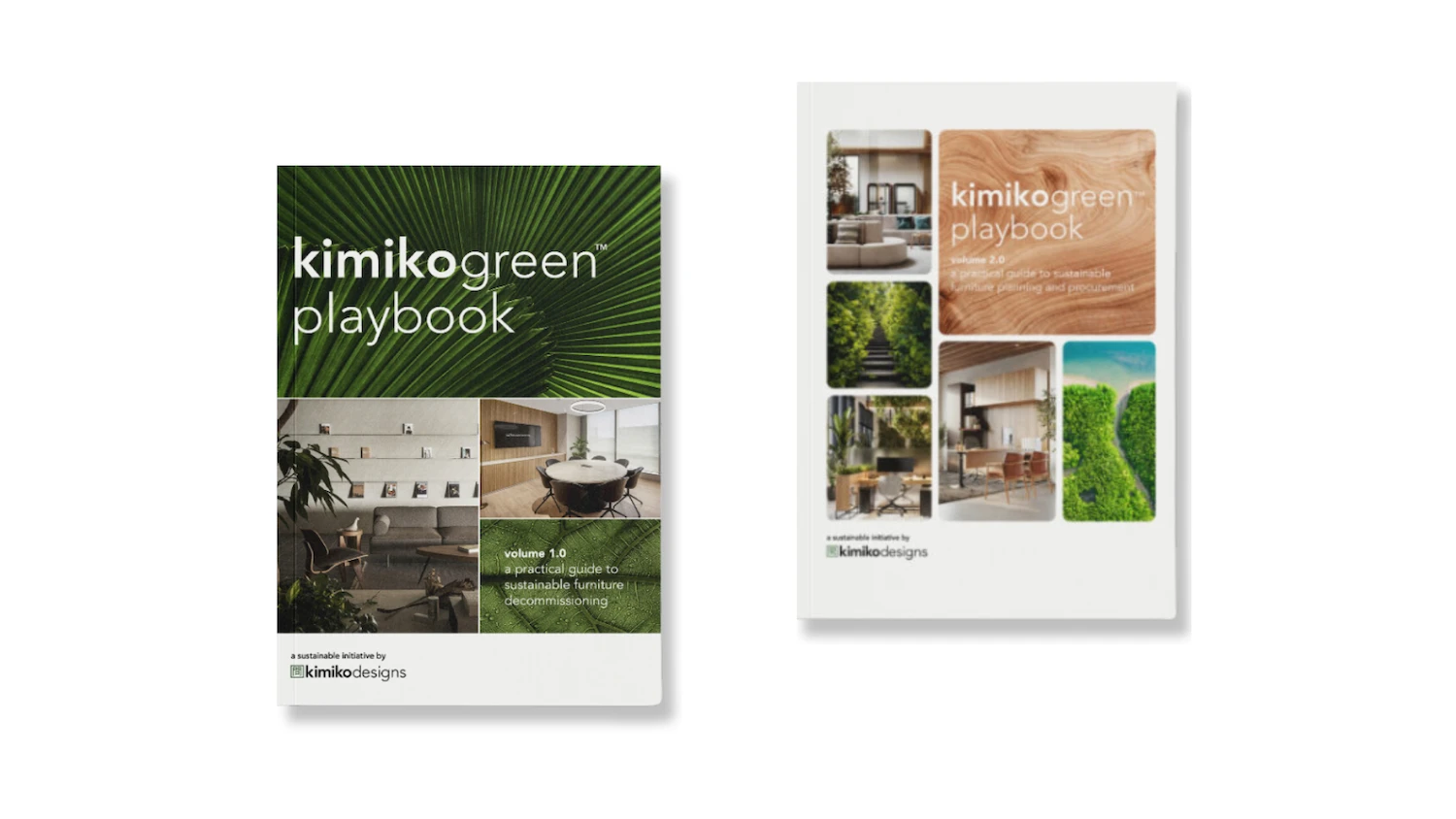
Kimiko Green’s Playbooks
mebl: Tell us more about developing the content of the playbooks.
Dianne Murata: It was an iterative process, based on our ongoing conversations with clients and discussions during the roundtables. We identified the questions asked repeatedly and dug deeper into those topics. It was important to share the insights in an accessible way, to help our members better understand the scale of the problem and the solutions available.
In 2018, for example, the US Environmental Protection Agency (EPA) reported that 17 billion pounds of commercial furniture was being sent to landfill annually. More tangibly, if you took 1/3 of all cars sold in the US in a year and drove them straight to the landfill – that's how much office furniture goes into the trash annually.
We are starting to calculate the pounds and the carbon equivalent of the volume of furniture that our members have so far diverted from landfill. And it's significant. It's really exciting. What surprises and delights me is the number of brand-name companies that are downloading the playbooks. Huge companies with huge facilities such as Disney, Toyota, Honda, State Farm … on and on. I wish I knew how they’re finding a tiny little company like us!
mebl: Beyond facility managers and owners, do other industry roles help advance the work of Kimiko Green? And do you have further aspirations for this initiative?
Dianne Murata: Architects and interior designers. We can't underscore enough the role that interior designers play in driving more sustainable decisions on behalf of their clients. Their specification power and influence are significant, so equipping them with knowledge and tools can really help move the needle.
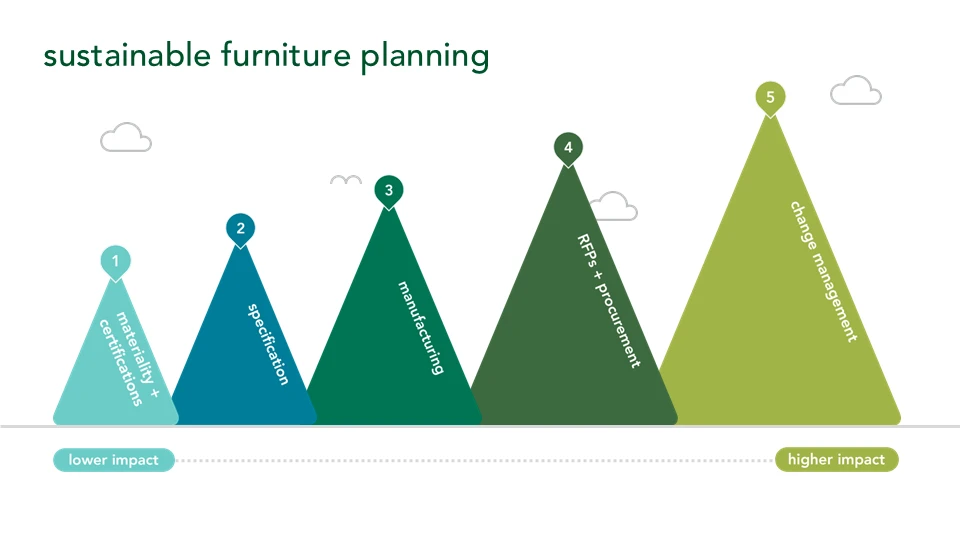
The different impacts of sustainable furniture planning strategies
mebl: You mentioned that your members saved $6 million through sustainable strategies. What were the most common strategies, and how did you measure this?
Dianne Murata: We lead with our mantra: just one thing. The numbers and the work can be overwhelming. Real change often happens when everyone commits to doing just one thing differently — collective actions drive real impact.
Additionally, the spectrum of impact reporting is vast, so it's important for us to encourage people to record whatever data they can while being mindful of their time and resource constraints.
As for the strategies that led to cost savings – resale, donation and recycling are definitely more common, but they require significantly more effort to achieve notable impact – there is less juice for the squeeze.
The most impactful landfill diversion strategy of all is reuse and reconfiguration of commercial furniture, whether it's systems or ancillary furniture. Most people associate diversion impact with donation, so we try to remind them of what they can do within their own organization.
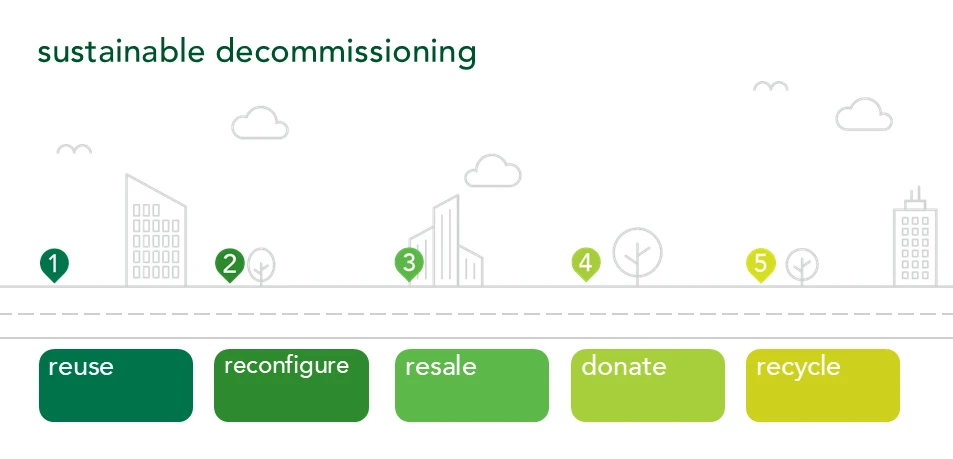
Kimiko Green's roadmap to sustainable decomissioning
mebl: How do you see Kimiko Green’s role evolving? Might Kimiko Green join Kimiko Designs at the center stage of your business?
Dianne Murata: Eventually, we hope to be able to drive and influence policy at a local, state and/or national level that encourages, entices and incentivizes organizations that buy and own furniture to do the right thing and operate more responsibly.
There's 22 billion dollars of commercial furniture coming into use each year which likely means there's a fairly equivalent number that will go out of use. It's our job to make sure that owners make informed, educated decisions and understand the business case for sustainability and circularity in commercial furniture. It’s also the right thing to do for the planet.
READ more Changemaker Interviews here.
